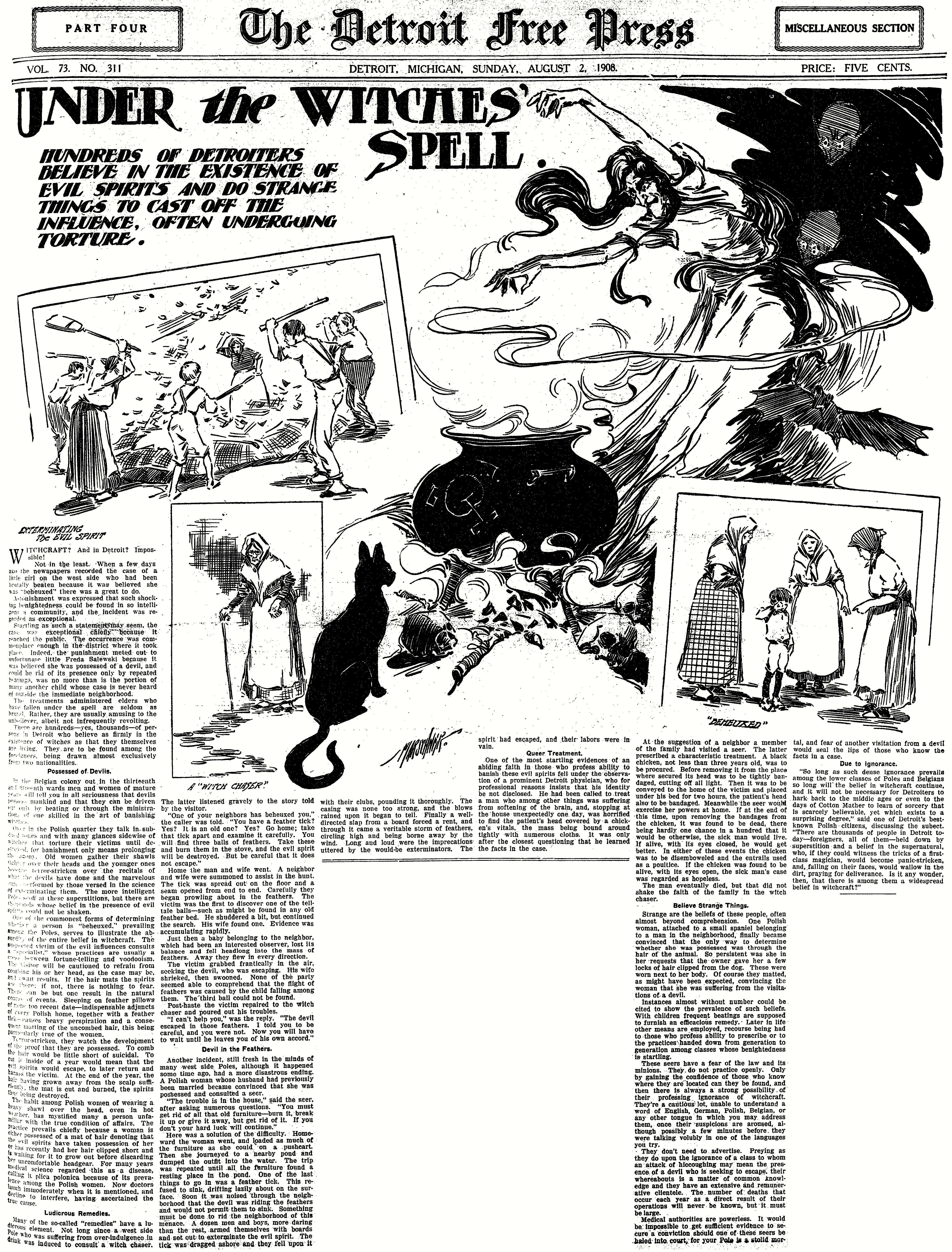 |
| Detroit Free Press, February 8, 1917 |
I've long collected articles on the occult and paranormal that pertain to Detroit but have refrained from posting them in hopes that I could compile more information and publish a proper article concerning the matter. Time constraints and other pursuits have thwarted that endeavor. Thus, my recent spate of article posting.
This is no barn-burner but it ties into a previously posted article concerning the apparently erroneous charges against
Celia Wrobleski [sic] of being a witch. Similarly,
Rose Veres was called such a creature for years before time proved that she was indeed such a monster though psychological defects were likely more to blame than the occult. Miss Wrobleski seems to have been nothing of the sort.
Ancillary research into Miss Wrobleski's (I believe that is the proper spelling) origins in Detroit lead to several possibilities: a one-year-old and six-year old girl, a few teenagers and one older woman who would have been around 26 at the time of the article.
Curiously, this last young woman was born in East Tawas in the 1890s. The same town where Detroit's most famous witch
Gundella was born in 1930. Gundella, aka Marion Kuclo (née Clark), said that she descended from a long line of green witches originating in Scotland. Might there be a connection? Probably not but now the notion is out there for any curiosity seeker with the wherewithal to find out whether there was or wasn't.
As for John Burchacki he ate some tainted slaw recommended by Mary Biskupa and became violently ill. He could have just as easily blamed food poisoning or his already sour stomach but instead went the witchcraft route espousing that Mrs. Biskupa was a practitioner of the ancient art. His slanderous accusation earned a $15 fine in Justice Sellers' courtroom.
The tie-in to the Wrobleski story was the MacGuffin in this article:
"We bring this case only to prevent repetition of such an outrage as that perpetrated upon Miss Celia Wroblewski, the girl the superstitious believe turns into a lion and a bear." remarked Charles Turie, the woman's lawyer.




